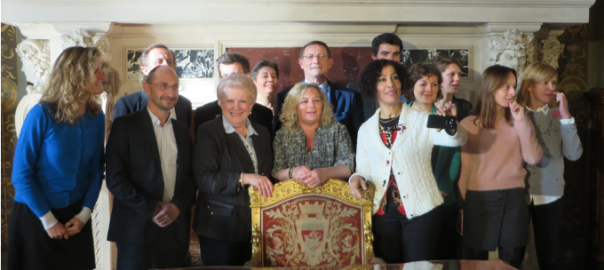This article follows an in-depth talk we had in December with the ASToN cities sharing lessons from the URBACT programme. URBACT has funded 162 EU networks and over 1000 cities since 2002 and inspired the creation of the ASToN network.
This article shares case studies and key takeaways from the URBACT programme about how cities should approach sustainability of their projects, and begin planning life after the ASToN funding.
Data has shown that 21% of 190 surveyed cities funded by URBACT between 2012 and 2019 have approved their Integrated Action Plan (known as the Local Action Plan in the ASToN network), whereas 27% are currently in the process of getting approval. 18% explain they are about to approve it, whereas 34% are not clear about it.
In addition, 48% of the surveyed cities have secured funds for the implementation of the Action PlanP: more than half from the city’s own or other local resources. Yet, it is unclear whether it was secured before or after the planning of the specific actions. Beyond this generic data, limited quantitative data actually exists on what has happened to the networks after their URBACT life.
Here are two examples providing more insight into the varied experiences of URBACT cities in approving and implementing their action plans.
Case 1: the Region of Brussels Capital’ Good Food Strategy
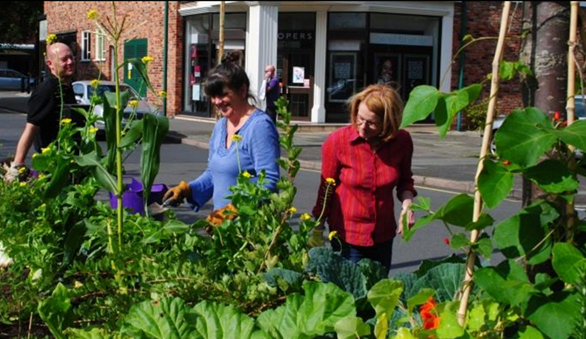
Whereas the Region of Brussels Capital, in Belgium, had been working in an unstructured way around the questions of sustainable food, since 2008, it became the Lead Partner of the Sustainable Food in Urban Communities network in 2012 (until 2015). Together with 9 other cities, it sought to transition towards low-carbon and resource-efficient urban food systems, while focusing on the whole food chain: production, distribution and consumption.
Its Action Plan designed 6 actions, all of which were completed and led to the co-design of the Good Food Strategy, the Sustainable food and Urban Agriculture Strategy. Since then, the methodology used for the co-design has been improved and a new Good Food Strategy (v. 2.0) is under way.
Case 2: The City of Schaerbeek’s work on Public Procurement

The City of Schaerbeek, Belgium, was part of a network focusing on Public Procurement, led by Preston (in the UK), with 5 other cities, Making Spend Matter. Between 2018 and 2021, Schaerbeek learnt from Preston on the ways to use spend analysis as an evidence tool: to enhance the impact of procurement by public and anchor institutions and to bring additional economic, social and environmental benefits to the local economy and its citizens.
Because of a lack of resources, Schaerbeek has not implemented the 20 actions of its Action Plan yet. Yet, it has carried out its spend analysis and designed a strategy for improving its Public Procurement. It has also become a member of an International network of cities working on Public Procurement, Procura +.
Based on these two cases in particular, and many other experiences observed and analysed throughout the years we have identified the following takeaways:
1) The key legacy is the methodology
The URBACT methodology, focusing on integration, participation and transnational exchange and learning has been a key gamechanger in the way the cities work. This includes:
● Learning to co-create with a variety of stakeholders, starting from the identified needs rather than administrative or political push (e.g. in Brussels’ case, for the first time all stakeholders gathered to discuss local food policies and remain the core of the Food Council) ;
● Developing transversality of administrations and the ability to work beyond silos (e.g. in Schaerbeek, the Local group was composed of civil servants from different departments who keep on working together);
● Nurturing learning and exchange amongst peers, if not transnationally, at least regionally and/or nationally (see below the roles of networks);
▪ Promoting and supporting (social) innovation within their constituencies and within the administrations themselves (transparency being a key challenging learning for Brussels and Schaerbeek: Brussels is evaluating and improving the process and content of its Good Food Strategy every 2.5 years); and,
▪ Keeping an integrated approach to local policies’ design and delivery, while developing adequate capacities and skills (e.g. Schaerbeek is investing in trainings for the Funding unit, then available transversally to all civil servants)
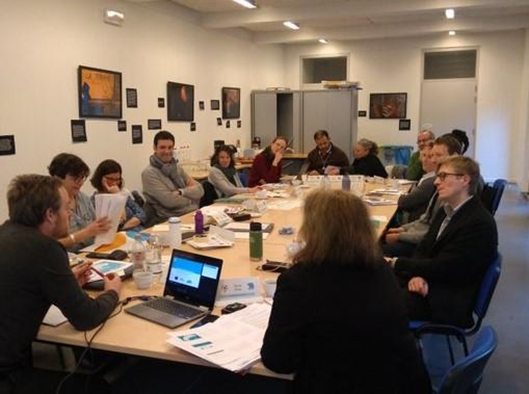
2) Creating an action plan provides a strategic push
Another key outcome of the participation in such networks has been development of the action plan: both as a process and as an output. Indeed, it has served in many instances as a driver for integrated sustainable development in cities. It has helped them become more systematic in approaching an issue (e.g. the Brussels’ Good Food strategy). More importantly, these are seen as living documents, adjusted iteratively on an on-going basis in parallel with the evolving needs, priorities and resources.

3) Seek out other network and funding opportunities
As a follow-up from taking part in such networks, cities have also participated in other European projects and networks. At the individual level, civil servants are increasingly interested in being part of such approaches and see the added value of further learning and exchanges (e.g. a recently carried out study with the municipality of Schaerbeek showed an unexpected high level of satisfaction from participating in Making Spend Matter and the wish to continue investing such working experiences). At the institutional level, some cities have designed specific strategies to further work with other European cities. For example, the URBACT experience has comforted Schaerbeek in drafting a Strategic note on European projects (including a SWOT and some concrete solutions) as well as an opportunity study.
Cities are also developing competences for looking for EU funds, putting together proposals, applying for these funds and implementing successful projects. This also includes having a clear vision of the timing for calls (notifications and deadline) and necessary human and financial resources.
4) Individuals play a key role in ensuring continuity
Following-up on such networks has also been possible only through the commitment and involvement of key people. Civil servants are at the forefront, they can act both as a leverage for their elected representatives and other stakeholders, and to ensure the continuity, e.g. in the implementation of strategic plans.
Elected representatives from different levels of governances are also crucial to support the follow-ups, to promote them more widely. Importantly as well, they can use follow-ups as self-praising, which is then a win-win for the implementation (e.g. in the case of Brussels, the Ministry of the environment made the Good Food Strategy one of her greatest achievements even though she was nominated only after the URBACT network).
Last but not least, stakeholders need to be engaged in the follow-up the same way, even if not more than in the Action Plandesign: they are crucial to co-design the actions, co-implement them and also be their ambassadors and take-up while supporting and promoting.
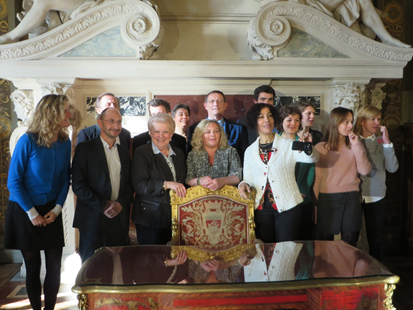
5) The power of keeping in touch
After networks like URBACT or ASToN, it is of utmost importance for cities to remain in contact with each other. This is quite successful in an informal way, at the level of individuals, via Facebook, Whatsapp, Linkedin and emails. At a more institutional level, Twitter is also efficient. Communities of practice (e.g. via Slack — see the TechPlace community and via LinkedIn groups — see the Walk’n roll cities and Gender Equal City groups) are also successful.
Beyond this direct networking, cities can keep on meeting and exchanging while taking part in various events — both as participants and speakers. National and international networks, either generic (e.g. ICLEI, Metropolis …) or thematic (e.g. Cities Coalition for Digital Rights , Milan Urban Food Policy Pact, …) ensure cities keep on exchanging amongst each other, in an enriched way, beyond their initial network.

Some final considerations
Life after a network such as URBACT or ASToN can be very smooth or complex, depending on the city context. Political support might ensure the follow-up of the activities but evolving local priorities and/or available human and financial resources can be barriers for continuation.
Continuing the work requires changing the way the administration works, which is a long and never-ending process. It requires transparency, honesty, and humility. It requires frontrunners. Individuals who will keep using the methodology, keep driving to implement the action plan, will seek out other funding, will ensure continuity, and will continue to build a wider community of sustainable and inclusive cities.
Article reposted from ASToN’s blog (French version here)

